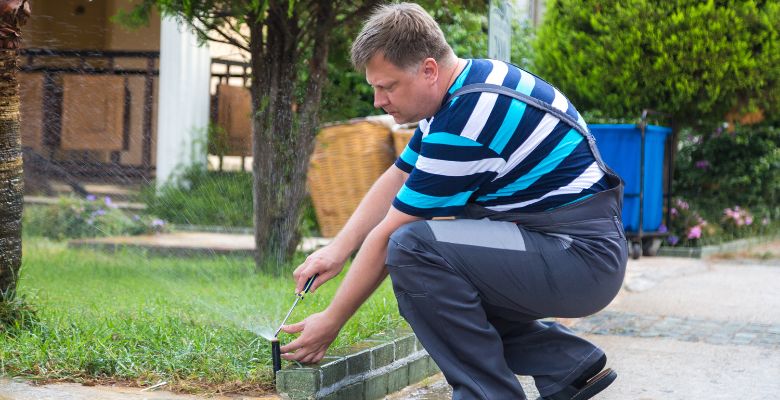Accent lighting is used to highlight focused objects or areas to draw attention. It goes beyond the basic illumination, adding depth and dimensions to objects. Accent lighting emphasizes architectural features, artwork, or textured surfaces. It utilizes directional beams, usually brighter than ambient lighting, to focus on particular objects. Unlike task lighting, which provides focused light, and ambient lighting, which provides a wash of light, accent lighting is primarily about creating visual interest and aesthetics. Table of Contents What Are the Common Types of Accent Lighting? Here are the five common types of accent lighting Track Lighting: These fixtures are used due to their adjustable feature. They highlight focus points like architectural features, artwork, or other decorative objects. Track lights offer adjustments and customization to fit with accent lighting, which makes them a practical choice. The intensity and direction adjustment allow a user to create the desired mood and atmosphere. The sleek design of track lighting makes it a space-saving fixture. Wall Washers: These fixtures are mounted on the wall and direct light upward and downward. They create an even and broad wash of light on vertical surfaces and also highlight textured surfaces. This broad wash of light minimizes shadows and creates a soft ambient look. A wall with a wash of light feels more spacious and open, adding a sense of depth and dimension. LED wall washers offer versatile styles and customization, including control method, color temperature, and beam angle, which provides a tailored light effect. Spotlights and Uplights: Spotlights offer a focused beam to illuminate plants, sculptures, or textured walls. They highlight a specific object that offers a dramatic effect. Place the light near an object to highlight it properly. Uplights provide a softer and more ambient glow, which makes an area wider. The beam angle of 30 degrees is used to create a focused and intense light, while 60 degrees is recommended for living rooms. Picture Lights: These lights are specifically designed to highlight architectural features or artwork. Picture lights are mounted beside or above the artwork to enhance its visibility. They offer a low-profile design and a focused beam of light to make an artwork stand out. While choosing a picture light, consider the size of the art, the desired intensity of light, and the type of bulb. LED lights are typically preferred due to their long life span and high energy efficiency. Cove and Recessed Lights: Cove lights are hidden fixtures that highlight ledges, ceiling lines, or architectural features. The light source was then directed toward or upwards the ceiling, which creates an ambient look. They provide a warm and inviting atmosphere. LED strips are used to achieve a cove lighting appearance. These lights last for more than 50,000 hours. The cove or recessed lights technique is mostly useful for emphasizing the tray ceilings, crown molding, or textured walls. How to Choose the Right Accent Lighting? Look for these four characteristics to choose the right accent lighting: Fixture Style with Decor: While choosing a fixture, check how it complements the existing design. It includes plumbing, lighting, and built-in elements like cabinets, walls, ceilings, and floor design. Fixture included in the sale of the home, a well-maintained fixture increases the perceived value of a home. Wrought wood, iron, or glass is used for a rustic look. Wrought iron sconces, chandeliers, and pendants are used for a vintage look. Lantern-style fixtures are used for hallways or bedrooms. Suitable Brightness: The brightness of a fixture is measured in lumens, according to the room’s size and function. For example, a larger room like a living room needs 1500 to 3000 lumens to illuminate the whole area efficiently. The kitchen or study area requires 4000 to 8000 lumens for task lighting. Ensure the light is capable of performing its intended function effectively. Adjust the brightness settings of the light based on the ambient lighting conditions for maximum viewing comfort. Color Temperature: Lower kelvin color temperatures ranging from 2700K to 3000K are used for warm, yellow tones and cozy settings. Higher kelvin, ranging from 5000 K to 6000 K, color temperature produces cool tones for modern, crisp accents. It is used in areas of high visibility, like offices and retail spaces. Task-oriented spaces(offices, kitchens) require cooler temperatures, while relaxing spaces need warmer temperatures. Smart Lighting Options: Modern fixtures utilize smart-control systems to enhance functionality and aesthetics. These lights are controlled using a mobile app or a voice assistant like Google Assistant and Alexa. A user is able to set different colors for a light or a timer to automatically switch between colors for an event. Smart lighting options also contain a sensor, which helps them to turn on only when they detect motion. These features make them highly energy efficient and cost-effective. How to Install Accent Lighting? Plan the Focal Points: Decide which features need to be highlighted before selecting fixtures. For example, picture lights and wall sconces are recommended to highlight architectural features or artworks. Cove and recessed lights are used to emphasize ceilings. Right Beam Angle: Selecting a right beam angle makes a big difference in the final look. A narrow beam angle between 15 to 25 degrees creates a sharp and focused light. It is used to highlight a specific object or the details of an object. A wider beam spreads light and creates a softer, subtle effect for general illumination. Position Fixtures: Fix lights slightly above, below, or to the side of the object to highlight it effectively and reduce the glare. This positioning creates depth and keeps the lighting comfortable for the eyes. Dimmers and Controls: Prefer using dimmers or smart controls to adjust the light’s intensity, according to the time of day or the mood. Hire a Professional: Hiring a qualified professional is the safest choice for hardwired lighting installations. They ensure correct wiring, meet electrical codes, and position fixtures for the best performance. A professional always takes care of potential hazards or costly mistakes. How to Maintain Accent Lighting? Keep the bulbs and lenses

